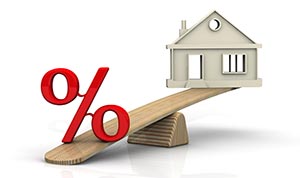 Australians care about their Superannuation but the mode of investment is such that it is easy to set it up and then forget about it. The aim of Super funds is to help your money accumulate during the course of your working life. This, the funds aim to attain through a wide range of investment options. The risk quotient differentiates one option of investment from the other. Let us find out all there is to know about your Super investment and also look into one little known yet very important aspect of such investment.
Australians care about their Superannuation but the mode of investment is such that it is easy to set it up and then forget about it. The aim of Super funds is to help your money accumulate during the course of your working life. This, the funds aim to attain through a wide range of investment options. The risk quotient differentiates one option of investment from the other. Let us find out all there is to know about your Super investment and also look into one little known yet very important aspect of such investment.
Australian Superannuation funds: aspects to look into
Every fund offers a disclosure statement wherein it talks about the proposed strategy of investment, returns on investment and the risk quotient. You can choose the option closest to your idea of investing. In the event that you are not too keen on choosing one, a default strategy is chosen for you.
Australian Super investment options have 4 broad categories
Investment options in Super can be broadly classified into four categories. These are Growth, Balanced, Conservative and Cash. Let us probe deeper into them.
A study into the best Super fund
1. Growth fund: Australian Super for fulfilling long-term objectives
Growth option uses 85% of the fund value for investing in shares and property. Those who don’t care about the short and the medium term prospects and risk quotient love this investment choice. This is because there is a consensus that despite all the possible volatility over the short and medium run, shares and property are most likely to grow in the long run. There is also a high growth option which allocates 100% into shares and properties.
High growth Super invests heavily in Australian and global equities with a small chunk allocated to direct property, infrastructure and cash. Those who seek smart long term returns and do not care much about the short-term fluctuations are the ones most likely to go for it.
The objective of such investment is to outdo the median growth fund return. Ideally, this investment fulfils its objective only when you stay in it for a dozen years or more. Things can of course be different for investors with different risk profiles. You should also be prepared for a negative annual return for as many as 5 out of every 20 years.
 Owing to the volatility (mild or extreme) of the markets, your fund can be reduced in size in the short term. To some, it can also give the impression of the fund being totally wiped out. Such volatility in the investment market and the reaction of a typical Super fund to it is termed as the Standard Risk Measure. It is because the High Growth Super funds plan a lot ahead that they do not have to fear for such market collapses in the immediate run. This was about the short-term risk.
Owing to the volatility (mild or extreme) of the markets, your fund can be reduced in size in the short term. To some, it can also give the impression of the fund being totally wiped out. Such volatility in the investment market and the reaction of a typical Super fund to it is termed as the Standard Risk Measure. It is because the High Growth Super funds plan a lot ahead that they do not have to fear for such market collapses in the immediate run. This was about the short-term risk.
There is also the medium-term risk. This balances two prime dangers. First is the reduction of fund value due to market volatility and second is the inability of Super savings to catch up with inflation. Long-term risk deals with a fund’s inability to measure up to the inflation. To reiterate, the medium term risk encapsulates the feature of both; the short term and the long term risk.
A study for short term risk level has to be conducted if the fund has to be kept for 5 years or less. If the fund needs to be kept for a timeframe between 5 and 20 years, the medium term risk level applies. For funds which are invested for more than 20 years, long term risk level applies.
2. Balanced fund: close to Growth fund than other Super funds
Now that we have studied the Growth option in some detail, let us focus our glance on the Balanced option. This option invests about 70% of the fund’s allocation on shares and properties. The remaining 30% goes towards cash and fixed interest. This investment module aims for smart returns albeit lesser than Growth option.
This is because unlike the Growth option, the Balanced option aims to avoid the losses made during the bad years. There is a moderate Balanced option which is a more conservative category of the Balanced option. This one aims to allocate 50% of the fund value in shares and properties.
There is a sustainable Balanced option which invests in the shares of only those companies that have been socially and environmentally responsible and have also catered to the demands of corporate governance.
3. Conservative fund: Risk-averse Super fund
Next is the Conservative option. This is well suited to those investors who want to run away from the short-term fluctuations and are prepared for lesser growth over the long term. There is a tendency to invest less in equities and property (about 30%) and heavily in cash and fixed interest.
The major difference between those investing in Growth option and those investing in Conservative option is the approach. The former is ready to withstand the tide of short-term fluctuation believing that the market gives enormous rewards over the long term, the latter have a poor risk appetite and run away from risk, prepared to accept lesser rewards.
4. Cash fund: for those Superannuation investors with least risk appetite
The Cash option is the last but a well-exercised option of Superannuation investment, too. This option invests entirely in the deposit-taking institutions of Australia. It may also take the route of capital guaranteed life insurance. Whichever way it takes, the aim primarily is to do way with the risk of losses made on investments. Hence it can be said that more than any other mode of Super investment, the Cash option protects your accumulated earnings and capital.
Australian Super rate highest for Growth funds
The expected return for the growth option is 6.2%. This lessens as we move along the less risky paths. For Balanced option, it is 5.7%, for Conservative option it is merely 4.2% and for the Cash option, an even paltrier 2.9%. looked another way, over a five-year span, an investment of $5,000 becomes $6,750 in the Growth funds, $6,600 for the Balanced funds, $6,150 for the Conservative funds and $5,750 for the Cash funds.
Superannuation Australia: Even Growth funds offer negative returns during certain years
For the Growth funds, an investor must be prepared for a negative annual return for as many as 4 to 5 years out of 20. For the Balanced option, this is 4 years. There is no fear of negative annual return in either the Conservative funds or the Cash funds.
Superannuation fund investment must be well-planned
 A majority of us have a work life of something like 40 years. Given a surge in average life expectancy, we also look forward to living 20-30 years after retiring. It is only anticipated that the Super grows in accordance to the needs of the time and measures up to changing values of inflation. If you are in this game for long, you will do well to choose the Growth or the Balanced option.
A majority of us have a work life of something like 40 years. Given a surge in average life expectancy, we also look forward to living 20-30 years after retiring. It is only anticipated that the Super grows in accordance to the needs of the time and measures up to changing values of inflation. If you are in this game for long, you will do well to choose the Growth or the Balanced option.
Best performing Super funds: Over the short and the long run
It is a little known fact that that you will be facing 4-5 years of negative annual return with the Growth or the Balanced funds and your fund will bleed due to certain market fluctuations but overall, all the losses will be more than compensated in the long run and you will have the last laugh (laughing in your retirement years). Historically speaking, the High Growth, Growth, Balanced and Sustainable Balanced options have offered smarter growth than their counterparts for any 20-year span.
Superannuation in Australia: 4 critical aspects to ponder over
There are a lot of aspects to consider before you choose an investment strategy. Your age is the first such aspect. Your risk profile and comfort level with an investment is the second aspect. Third aspect- when do you actually want to access your Super fund- are you in it for the long haul? And the fourth aspect deals with your retirement objectives.
Investment options hit by market volatility: should you care?
Let us say you do not want to access your funds in the next 5-7 years. In this case, will you be bothered by how the value of the fund is changing over the course of next 5-7 years? My answer is NO. Take the analogy of your home. If you are not proposing to sell it for another 5 years, you will not be interested in the capital growth figures for the first year. The capital growth only comes into the picture once you are prepared to sell and it has an impact on your ROI.
Taking the cue, it is possible for a Growth fund to run abysmally low for the first 5 years and yet offer you a handsome growth in the 20th year (the time when you plan to take out the money, the time coinciding, may be, with your retirement years). So the crux idea and one that you need to figure out first is when do you actually need the fund. This will help you determine the fund that you should choose. In my opinion, all other aspects are outweighed by this one aspect.
Investment strategies depend upon your retirement goals
If you are close to retirement and may need to access your investment in 5 years or less, you can always go for the Conservative or Cash options which propose lesser returns but also lesser risk. To reiterate, it is important to find out just what your retirement goals are and how much money you would require to fulfil them. Your Super investment strategy should revolve around it.
Super fund comparison
Before making the choice of investment, you need to ask yourself exactly how much control do you want over your Super. Would you rather leave the decision of investing to the fund managers or like to be involved yourself in the day-to-day management of the fund. Ideally, you should compare all the options. Is this not what we do before making any kind of purchase?
Australian Super fund investments can be changed (from time to time)
There are lot many aspects of your account that you would like to change from time to time. It is good to prefigure the protocols surrounding such changes. To begin, you can change the route of investing your existing account balance. You can change the style of making contributions.
Here, I am talking about personal contributions, rollovers and also future employer contributions. If you possess a retirement income account, you can change the fund from which the payments towards retirement income are made.
Australian Superannuation investment turning towards property
 I think it will not be off the note to talk about an emerging area for Super investments. Yes, I am talking hereof the property market. While residential properties still have a very limited allocation when it comes to where the Super money is going, the trends show that such investments are on a rise, most definitely.
I think it will not be off the note to talk about an emerging area for Super investments. Yes, I am talking hereof the property market. While residential properties still have a very limited allocation when it comes to where the Super money is going, the trends show that such investments are on a rise, most definitely.
While the Conservative and the Cash option do not exercise the ‘property’ alternative (the former employs it but only a very minimal percentage of the total fund allocation), the Growth and the Balanced options do look into property. There has already been a lot of debate surrounding the Limited Recourse Borrowing Arrangement (LRBA) regarding property purchase through SMSF.
The Financial System Inquiry proposed that the government look into such leveraged investments because they were favouring SMSFs and thus giving an ‘unnatural’ turn to market dynamics. The government feels that the matter does not deserve too much reading into, presently, because the implications of LRBA are not any severe.
Property within Super comes with its own tax structure and investors are keener than ever before to seize the moment because the tax rebate (absent in traditional property purchases) helps them register greater profit for their Super investment portfolio. But again, you will have to be actively involved in your fund’s management and investment decisions if you want to allocate any greater than a fund’s default diversification percentage into the property market.
Even the best performing Super funds give too much weight to local shares
There is lot to be said about our affinity for the local equities, too. Fund managers have been culprits of laying greater stress on them when the truth clearly suggests that it is the global equities which are registering far great profits than our ailing local shares (interestingly, we secured 37th rank in a survey that tested the performance of the share market of 73 countries). This is something you can probe into and find solution for only if you are deeply involved in your Super fund.
Super in Australia an integral part of retirement planning
 I like to mention that retirement is not a time but a place and how beautiful we make that place depends upon some of the financial decisions we take. Choosing a wise investment strategy for our Super Fund is definitely one such decision and one that has an far-reaching impact.
I like to mention that retirement is not a time but a place and how beautiful we make that place depends upon some of the financial decisions we take. Choosing a wise investment strategy for our Super Fund is definitely one such decision and one that has an far-reaching impact.


